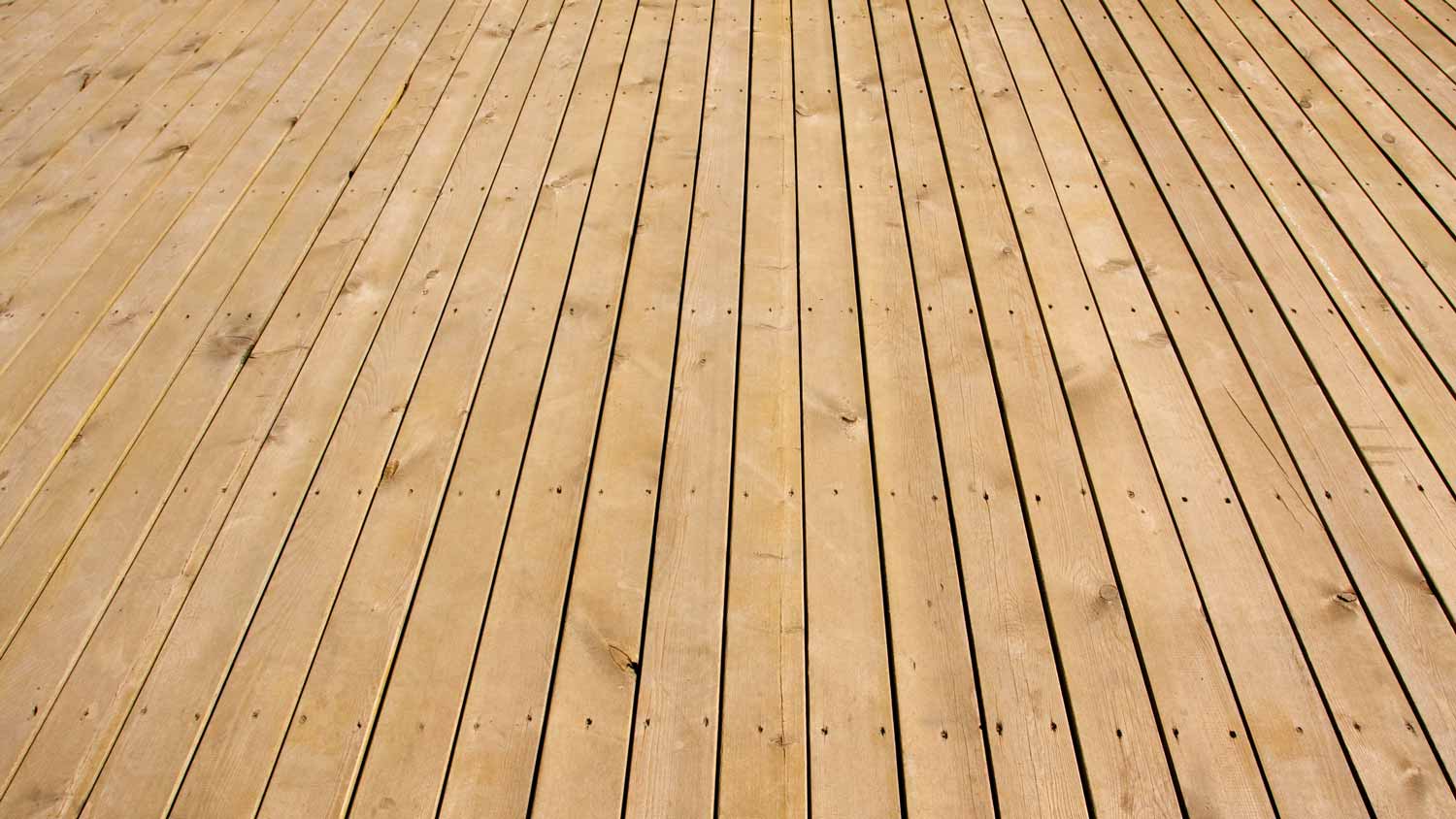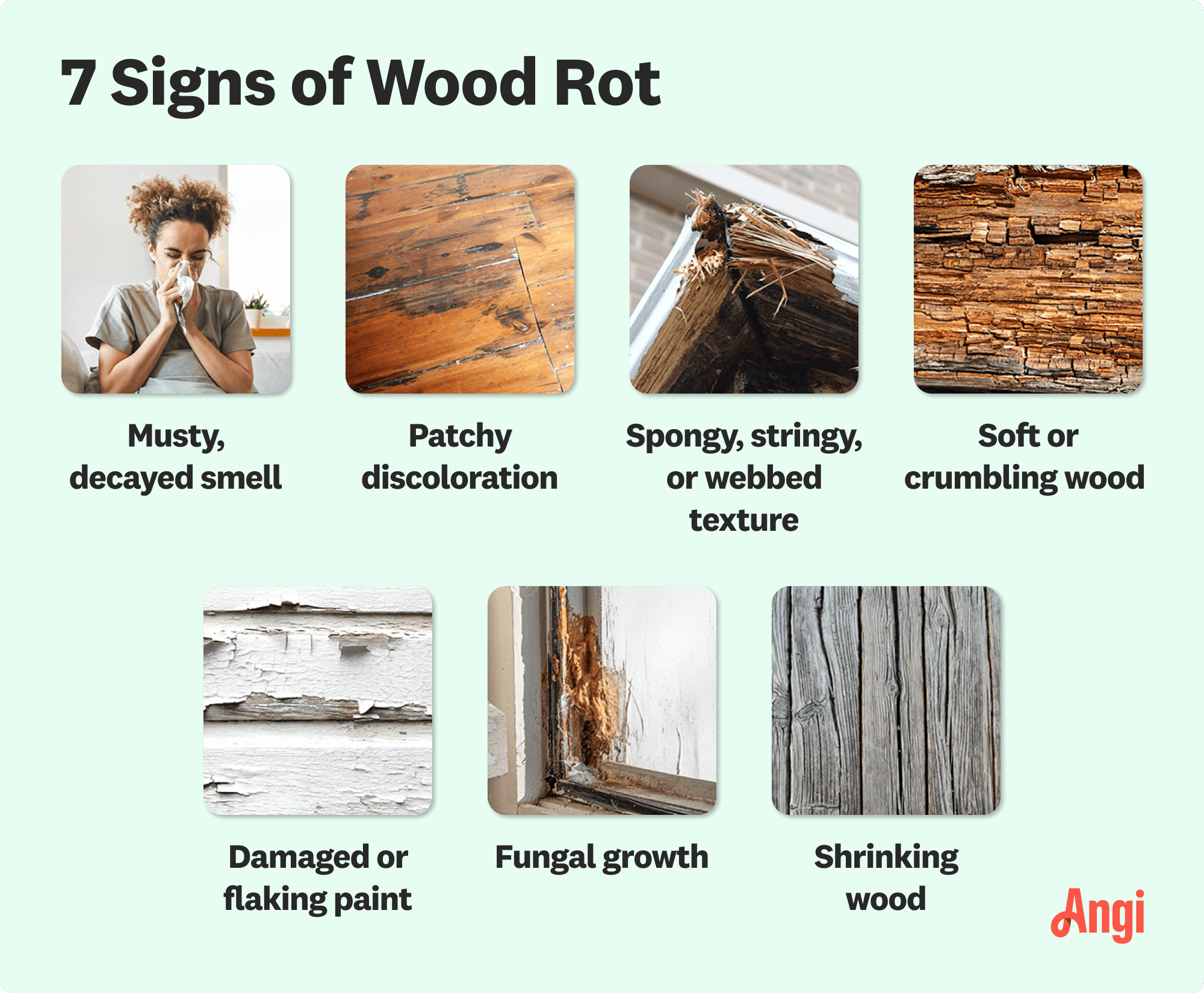
Fire damage restoration costs vary widely based on the extent of the damage. Learn how to assess your home and estimate your total after a fire.
Take some of the pressure off


In the right conditions, pressure-treated wood will rot due to fungi.
Wood rot can happen due to manufacturing defects and prolonged moisture exposure.
Fortunately, you can take steps to repair rotted wood and prevent future rot from occurring.
Pressure-treated wood has a few advantages over traditional wood—but will pressure-treated wood rot? The simple answer is, surprisingly, yes. However, that doesn't mean that the wood you used to build a deck or frame your home has to rot. Learn why pressure-treated wood rots, what to do about it, and how to prevent it from happening in the future.

Pressure-treated wood undergoes a process that injects preservatives into it using high pressure. The preservatives protect the wood from insects and moisture while also slowing down the natural decay process.
Since it resists moisture and insects, pressure-treated wood is often recommended for use outdoors, particularly in decks and porches.
Pressure-treated wood is more resistant to rot than regular wood, but it’s not immune, and it can still rot. Environmental conditions, age, damage, and improper treatment can all contribute to rot in pressure-treated wood. You can take steps to prevent wood from rotting, but even pressure-treated wood won’t last forever.

If pressure-treated wood has undergone a special treatment to prevent rotting, how is it possible that it can still rot? The key thing to remember is that the wood treatment process isn't perfect. It can slow down decay and offer the wood extra protection, but it won't make the wood impervious to damage like wood rot or dry rot.
Several factors can cause pressure-treated wood to rot, including:
Prolonged exposure to moisture or wet conditions
Limited ventilation or drainage around the wood
Damage to the wood, which allows rot-causing fungi to get in
Improper treatment techniques
Advanced age
Often, a common cause of rot in pressure-treated wood is a type of fungus, which can get into the wood through cracks or openings created by screws or other fasteners. Over time, the fungus can spread, causing the wood to rot.
You may be able to repair dry rot or other types of rot in pressure-treated wood as long as the damage isn't too extensive. Repairing wood rot involves removing the damaged sections of wood and replacing them with wood filler.
If you're concerned about the extent of the rotting or don't feel comfortable making the repair yourself, working with a professional water damage restoration company is the best option. This is especially true if there are any signs of structural damage due to the wood rot. In that case, you will need to repair a large section of the affected wood, so it’s best to find a pro who can fix wood rot.
Dry rot repair costs an average of $500 to $3,000, depending on the extent of the damage. Rot can spread quickly, so repairing or replacing affected wood quickly will save you money in further repair costs later.
Though the terms are used interchangeably, wood rot and dry rot have different meanings. Wood root is a broad term that describes various types of fungal decay in wood, while dry rot is a specific type of wood rot caused by the fungus Serpula lacrymans. Dry rot can thrive at a low moisture level and spread rapidly across plaster and even masonry to infect new areas of wood.
The most effective thing you can do to stop wood rot in pressure-treated wood is to keep it as dry as possible. Preventing long-term water exposure will reduce the risk of rot in pressure-treated wood inside or outdoors. Some ways to prevent wood rot include:
Paint or stain and seal pressure-treated wood to create a water-resistant barrier.
Ensure proper drainage so water doesn’t pool up on the wood.
Avoid putting things that create or can trap moisture, like rugs or planters, directly on the wood.
For wood used indoors, make sure there’s enough ventilation for the wood to dry when it gets wet.
For decks, porches, and other outdoor features, clear leaves and other yard debris.
From average costs to expert advice, get all the answers you need to get your job done.

Fire damage restoration costs vary widely based on the extent of the damage. Learn how to assess your home and estimate your total after a fire.

Fire hydrant costs might not be an expense you think about day-to-day, but they’re important to consider for the safety of your home.

Need to get rid of lingering smoke odors in your home? Learn how much smoke remediation costs to budget accurately for this major undertaking.

What does water damage look like in a home? Use this guide to spot water damage after a leak or flood to determine if you need to take action.

Brown spots on the ceiling may be caused by a few reasons, including flashing failure, improperly installed HVAC units, and leaking pipes.

When your basement floods, you need to get your home clean, dry, and safe again. Learn what you need to do and who to call for help